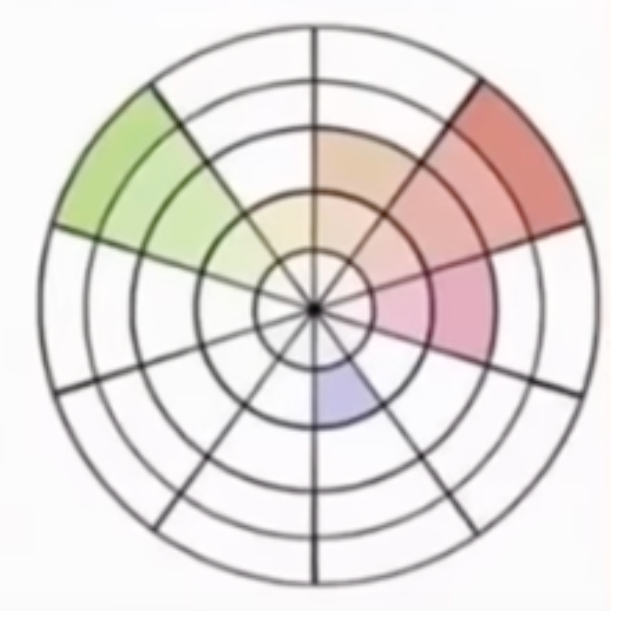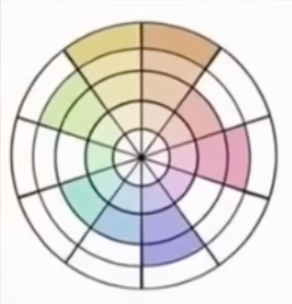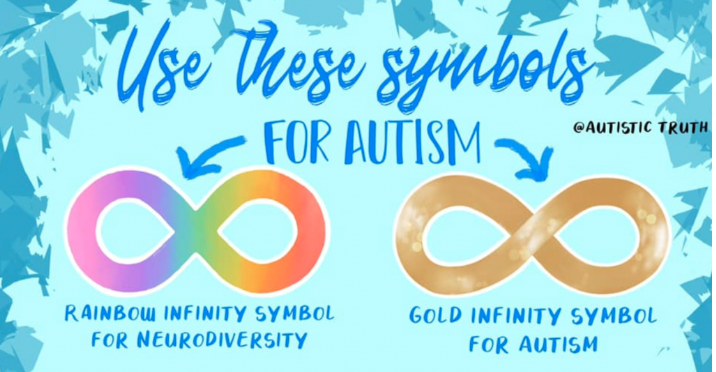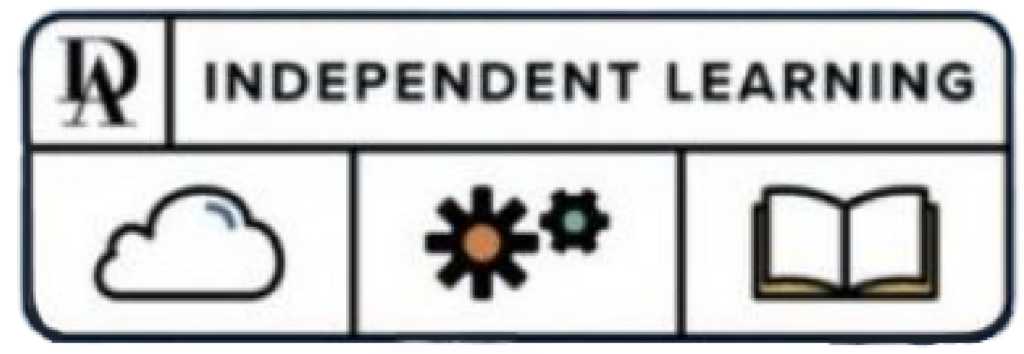Often misunderstood or overlooked in the mainstream media and conversation about autism, here are some basics about how autistic people talk about and represent themselves—and the ways you can be more inclusive with your language and symbols by listening to autistic voices.
Language
Recently there seems to have been somewhat of a push towards person-first language (ie. “a person with autism”) often led by allistics (non-autistics, see Vocabulary). However, research shows that the majority of the autistic community actually still prefers identity-first language (ie. “an autistic person”). As a result, I will be using identity-first language throughout this blog when referring to autistic individuals/communities.
Another important set of terms is high/low masking and high/low support needs instead of high/low functioning.

To understand these terms, first we must clear away a common misconception.
As shown in the picture to the left, autism is not a spectrum in the way that it ranges from “less” autistic to “more” autistic
Ideas like “touch of the tism” or “everyone’s a little autistic” can harmfully make it difficult for actual autistic people to receive accommodations and support!

Rather, autistic people describe autism as a spectrum based on the expression of various traits and the amount of support autistic people may need in those different areas.

This can shift over an autistic person’s life, as well as from person to person—every autistic person’s experience is different, just like every woman’s experience is different, or every black person’s experience is different. Even though there are, of course, overarching similarities, it is important to keep the diversity of the autism spectrum in mind so that you can be accommodating to individual autistic people’s specific needs!
Now, how are these two mindsets reflected in the language (rejected and accepted by the community) used to describe autistic people?
Functioning Labels
“Functioning labels only go so far and don’t actually describe what autistic people can do— for example, whether they can speak and hold a job or not. Hari Srinivasan, one of the first non-speaking autistic people admitted to the University of California Berkeley said that functioning labels are stigmatizing.”
~Eric Garcia, “We’re Not Broken,” Chapter 1
- High/Low Functioning
- This terminology, created by allistics, has long been used to refer to autistic people without their consent or input
- Many advocates have spoken out about its harmful connotations around the idea of the “functionality” (and worth) of an autistic/neurodivergent person being based on their “success” living life like a neurotypical
- Essentially, these terms:
- portray neurotypical as the ideal
- frame neurodivergence like autism as marked by deficits
- designate whether or not the way people display autism is “acceptable” to the neurotypical way of lie (ie. “high functioning” from a neurotypical pov)
- High/Low Masking + Support Needs
- Instead, much of the autistic community leans towards describing people across the spectrum and their various support needs and manifestations of autism through language referring to their…
- “masking” – see Vocabulary, essentially when an autistic person simulates neurotypical behavior to “hide” their autism and assimilate into neurotypical society or situations
- “support needs” – refers to the pattern and intensity of support systems, resources, and accommodations needed for someone to participate in an environment designed for neurotypical people, like a school.
- For example, an autistic person with high masking and low support needs may be able to “pass” as neurotypical in daily life situations like school, and thus may be perceived from a neurotypical-centered and ableist perspective as “high-functioning,” despite being neurodivergent and thus neurotypical environments being overwhelming, challenging, and not accommodating for their brain and its specific needs
- High masking, as well as support needs not being met, often lead to severe mental health impacts for autistic people, especially because diagnoses and the resources and empowering self-knowledge they provide may not come until much later in life, if at all (see masking in Vocabulary)
- Support can take many forms—Eric Garcia lists a few basic ones in his book, We’re Not Broken: Changing the Autism Conversation: help in finding jobs, lifting out of poverty if they can’t get a job, avoiding discrimination, living in the community they choose, having access to adequate education and health care, and being free to pursue fulfilling personal lives
- Instead, much of the autistic community leans towards describing people across the spectrum and their various support needs and manifestations of autism through language referring to their…
“… someone who on the surface might appear high functioning can have difficulties that are different from those who require more supports. It is because we as autistic people realize that we have much in common with those who cannot speak or who need more services that we want to make the world more adaptable for them too.”
~ Eric Garcia, “We’re Not Broken,” Chapter 2
The best policy is always to listen to the autistic individuals in the space you are participating. People will inevitably have a spectrum of opinions, so make sure to directly ask about a person’s preferred language instead of making assumptions and generalizations.1
Symbols

The most commonly accepted symbol for neurodiversity is the rainbow infinity symbol, created by neurodiversity advocates to represent the infinite variations and possibilities within the community. It is often used for the autism community as well, along with the gold infinity symbol since the elemental symbol for gold is Au (for AUtism!).
Unfortunately, there are many popular symbols that are associated with autism that the community itself has long spoken up against as harmful.

The puzzle piece is probably the most commonly used and recognized symbol for autism, despite the fact that it has been overwhelmingly denounced by the autistic community as a hate symbol.
It has an extremely ableist history of stigmatizing and dehumanizing autistic people (even once depicting a crying boy within the puzzle piece), and its implications perpetuate the narrative that autistic people are incomplete (with a “piece missing) or have a “puzzling disorder.”
Similarly, the color blue has been used without autistic input or permission to represent autism, maintaining a problematic history of representing harmful and scientifically inaccurate ideas about autism being a “boy’s” disorder.
It is important to consider autistic voices when recognizing and using symbols for the community.

